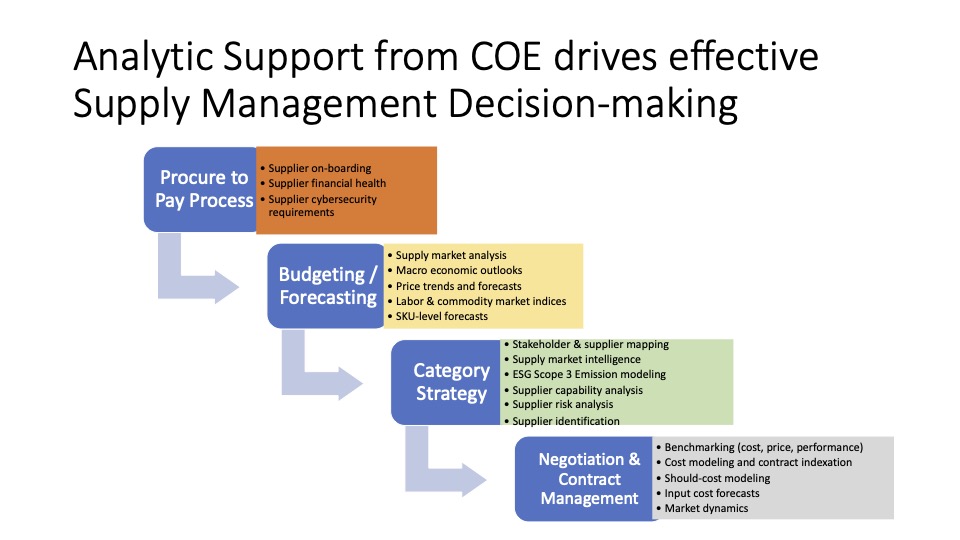Why New Tariffs Won’t Bring Jobs Back to the United States
My colleague Jon Pershke, a former Lenovo strategy executive who now serves as a Faculty Advisor at our Supply Chain Resource Cooperative, recently presented me with the following scenario.
:Let’s say I produce product A with subcomponents X, Y, Z, etc.all produced in China today. Now, I am weighing two choices for A final assembly:
Option 1: US final assembly. Tariffs: I will still pay tariffs on X, Y, Z – right? but save tariffs on the final transformation cost….
Option 2: Neutral company assembly – like Vietnam or India. Tariffs: I won’t pay any under today’s rules – right?
Question: So isn’t the current system actually set up to discourage US final assembly for most complex supply chains with lots of component costs and little transformation costs?”
Answer: Correct. When you take this (there is no way that all the sub components can be locally sourced for most products other than commodities like wood or steel maybe) PLUS the idea that zero consistency means no one will make a serious investment in the US – the Chips Act being the exception possibly….All this equals very little to no manufacturing growth in the US…..
Jon’s scenario and response is spot on. Unfortunately, although the current administration is trumpeting that tariffs will bring back new manufacturing jobs back to the United States, this is false. The reason is that it takes years, if not decades, to move manufacturing facilities from one country to another. I recently spoke to the CPO of a large global manufacturing corporation, who stated that “My boss asked me if we could bring back our manufacturing from China to the US. I told him that yes we could – but it will take at least five years and hundreds of millions of dollars, and in the end, doing so would make our products more expensive and we would lose market share to overseas competitors.”
Moving manufacturing from one site to another is not an easy issue. This is a decision that we explored in a recent study with some of my colleagues from the UK and Canada, published in the Management Busienss Review. In an effort to understand their strategies for managing the compound disruption of Brexit, the US-China trade war, and COVID-19, we gathered data from forty senior executives representing twen- ty-seven multinational companies headquartered in the UK and USA. We considered diverse industries, including automotive, chemical, clothing, consumer goods, heavy engineering, manufacturing (aero- space, furniture, medical instru- ments), petroleum, pharmaceutical, and technology companies. We conducted these interviews between November 2019 and April 2020, a period during which the UK was withdrawing from the European Union, a trade war between the US and China was underway, and COVID-19 was spreading rapidly.
In an effort to understand their strategies for managing the compound disruption of Brexit, the US-China trade war, and COVID-19, we gathered data from forty senior executives representing twenty-seven multinational companies headquartered in the UK and USA. We considered diverse industries, including automotive, chemical, clothing, consumer goods, heavy engineering, manufacturing (aerospace, furniture, medical instruments), petroleum, pharmaceutical, and technology companies. We conducted these interviews between November 2019 and April 2020, a period during which the UK was withdrawing from the European Union, a trade war between the US and China was underway, and COVID-19 was spreading rapidly. When we analyzed our data, we dis- covered eight primary strategies for supply chain design (for more about our research methods, see appendix 1). Between them, they offer a menu of offshoring options. We found that three factors influence managers’ choice of supply chain design: how much they can invest in supply chain infrastructure, including facilities, staff, and equipment; their own per- ception of the uncertainty of their business environment; and how mobile their suppliers and supply chain assets are.
One of the most common strategies was one we termed Flavor 1: Rolling with the punches Significant inherent limitations pre-vented several companies from changing their supply chain designs. While managers and scholars alike tend to assume that executives can and should make their companies agile, those in our study found that their access to resources and the exist- ing structure of their supply chains severely constrained their pursuit of supply chain agility. During a disruptive period, the leaders of companies in industries with high fixed costs for existing facilities, as well as those with high regulatory oversight, can change their supply chain designs very lit- tle or not at all. Several executives explained that their suppliers were all located in one place and that the cost of moving them was prohibitive, nor could they find alternative suppliers. For one company, fixed costs and immobile suppliers made it difficult to respond to disruptions with agility. In the case of compound supply chain disruptions, these executives carry on as usual, hoping for the best.

Another strategy was Flavor 7: Nearshoring of production and supply. Other leaders decided to stop short of onshoring, but designed a regional strategy that took advan- tage of local trade agreements like the US-Canada-Mexico Agreement. However, this strategy is under jeopardy, given the recent administrative moves to impose tariffs on our free trade agreement partners. To adhere to this nearshoring strategy, executives moved production facilities to lower-wage economies near the UK or US and found suppliers nearby. Their companies drew agility from having their production close to their consumers, reducing the opportunities for their supply to be blocked
A small group of executives decided to move their companies fully on shore, abandoning the low costs of long supply chains. In these cases, the cost of shipping from distant countries, including disruptions and long delays, has simply over- whelmed any past benefit. They did so to escape chronic supply uncertainty, long lead times, and production shortages. They worked in industries like pharmaceuticals or petroleum, which are subject to strong government oversight, or those in which short lead times are essential.
The common theme that all our respondents mentioned, regardless of the design of their physical sup- ply chain, was digital transformation. They all agreed that creating a more agile and resilient supply chain required companies to invest strongly in improving their ability to track material in motion and in storage. As one astute executive put it, “You can’t manage what you can’t see.” Digital tools can alleviate many disruptions, allowing managers to identify blockages, quickly moving orders to different suppliers or facilities, and planning the mitigation of likely problems. In the current environment, understanding yoru supply chain will be the key to agility in a highly volatile global setting.


